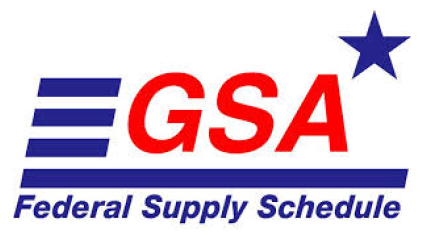Introduction
In government contracting, understanding the nuances of contract termination is essential for contractors. The two primary types of termination are Termination for Convenience and Termination for Default. This blog post provides an in-depth look at these termination types, their implications, and the rights and remedies available to contractors. This member-exclusive resource aims to equip you with the knowledge needed to navigate these complex situations effectively.
Termination for Convenience
Termination for Convenience occurs when the government terminates a contract without fault on the part of the contractor. This type of termination can happen for various reasons, including shifts in government needs, budgetary constraints, or changes in policy.
Key Aspects
- Reasoning: The government does not need to provide a specific reason related to the contractor’s performance. It can be based solely on the government’s interests.
- Compensation: Contractors are typically entitled to fair compensation for work completed and costs incurred up to the termination date. This may include:
- Costs directly related to the work performed.
- Costs associated with the termination process, such as demobilization.
- Reasonable profit for work completed.
Contractor Rights and Remedies
- Claim Submission: Contractors can submit a claim for compensation, detailing the incurred costs and requesting reimbursement. It’s crucial to provide thorough documentation to support the claim.
- Settlement Negotiation: The contractor and the government will negotiate the final settlement amount. Contractors should seek legal or professional guidance during this process to ensure fair compensation.
Termination for Default
Termination for Default occurs when the government terminates a contract due to the contractor’s failure to perform according to the terms of the contract. This type of termination is more severe and has significant consequences for the contractor.
Key Aspects
- Grounds for Default: Common reasons include failure to deliver on time, not meeting specifications, or breaches of contract terms.
- Consequences: The government may seek damages for any additional costs incurred to complete the contract with another contractor. Additionally, a termination for default can adversely affect a contractor’s reputation and eligibility for future contracts.
Contractor Rights and Remedies
- Disputing the Default: Contractors have the right to dispute the termination if they believe it was unjustified. This can involve proving that the default was excusable due to unforeseeable events or government actions.
- Appeals and Disputes: Contractors can appeal the termination decision through the contracting officer or pursue litigation in appropriate forums, such as the Court of Federal Claims.
- Mitigation: Contractors should take immediate steps to mitigate damages and prepare for potential claims from the government.
Key Differences Between Termination for Convenience and Default
Aspect
Termination for Convenience
Termination for Default
| Reason for Termination | Government’s interest, not contractor’s fault | Contractor’s failure to meet contract terms |
| Compensation | Yes, for work performed and termination costs | No, and contractor may owe damages |
| Impact on Future Contracts | Generally neutral | Can negatively impact reputation |
| Remedies Available | Settlement negotiation, claim submission | Dispute termination, appeal, litigation |
In-depth Guides on Termination Clauses
Understanding termination clauses is crucial for navigating contract termination. Here we provide detailed explanations and examples of standard termination clauses in government contracts:
Common Termination Clauses
- Termination for Convenience Clause
- Example: “The government may terminate this contract, or any part hereof, for its sole convenience. In the event of such termination, the contractor shall immediately stop all work hereunder and shall immediately cause any and all of its suppliers and subcontractors to cease work. Subject to the terms of this contract, the contractor shall be paid a percentage of the contract price reflecting the percentage of the work performed prior to the notice of termination, plus reasonable charges the contractor can demonstrate to the satisfaction of the government using its standard record keeping system, have resulted from the termination.”
- Termination for Default Clause
- Example: “The government may, subject to the provisions of this clause, by written notice of default to the contractor, terminate this contract in whole or in part if the contractor fails to (i) deliver the supplies or to perform the services within the time specified, (ii) make progress, so as to endanger performance of this contract, or (iii) perform any of the other provisions of this contract. The government may require the contractor to transfer title and deliver to the government, as directed by the contracting officer, any (i) completed supplies, and (ii) partially completed supplies and materials, parts, tools, dies, jigs, fixtures, plans, drawings, information, and contract rights (collectively referred to as ‘manufacturing materials’) that the contractor has specifically produced or acquired for the terminated portion of this contract.”
Templates for Claim Submissions and Dispute Letters
To assist contractors in the formal processes of claim submission and dispute resolution, we provide the following templates:
Template for Claim Submission (Termination for Convenience)
[Your Company Name]
[Your Address]
[City, State, Zip]
[Email Address]
[Phone Number]
[Date]
[Contracting Officer’s Name]
[Agency Name]
[Agency Address]
[City, State, Zip]
Subject: Claim Submission for Termination for Convenience under Contract [Contract Number]
Dear [Contracting Officer’s Name],
We are submitting this claim in accordance with the termination for convenience clause under contract [Contract Number]. The termination was effective as of [Termination Date].
We have calculated our costs and respectfully request compensation for the following:
- [Detailed cost description, e.g., “Costs for completed work up to the termination date”]
- [Costs related to termination process, e.g., “Demobilization costs”]
- [Reasonable profit on work completed]
Please find attached detailed documentation supporting these claims. We look forward to your prompt response and settlement of this matter.
Sincerely,
[Your Name]
[Your Title]
Template for Dispute Letter (Termination for Default)
[Your Company Name]
[Your Address]
[City, State, Zip]
[Email Address]
[Phone Number]
[Date]
[Contracting Officer’s Name]
[Agency Name]
[Agency Address]
[City, State, Zip]
Subject: Dispute of Termination for Default under Contract [Contract Number]
Dear [Contracting Officer’s Name],
We are writing to formally dispute the termination for default issued on [Termination Notice Date] under contract [Contract Number]. We believe that this termination was unjustified due to [specific reasons, e.g., “unforeseeable events impacting performance” or “errors in the evaluation of our performance”].
We request that this decision be reviewed and reconsidered. We are prepared to provide additional documentation and information to support our position. Additionally, we request a meeting with you and relevant stakeholders to discuss this matter further.
Thank you for your attention to this matter. We look forward to your response.
Sincerely,
[Your Name]
[Your Title]
Conclusion
Navigating contract termination, whether for convenience or default, is a critical aspect of government contracting. Understanding the distinctions and knowing your rights and remedies can significantly impact your business’s financial and operational outcomes. Members are encouraged to utilize the resources provided to strengthen their understanding and readiness in managing contract terminations. For further assistance and personalized support, please visit our member portal.








